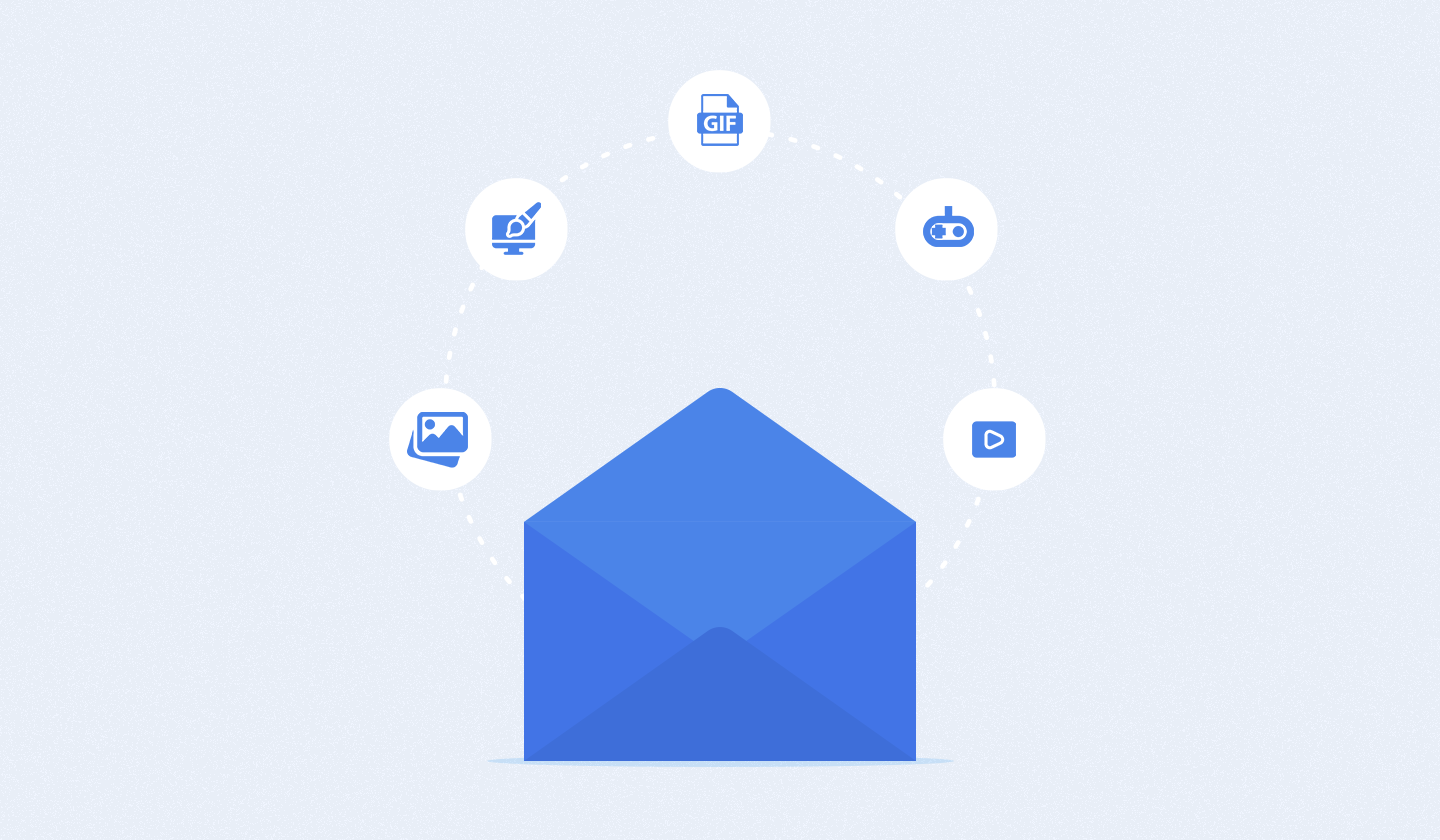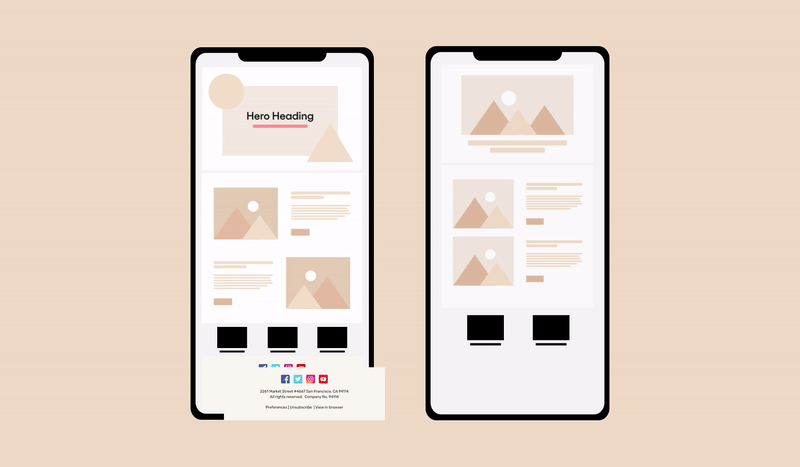When it comes to email, there is no one-size-fits-all answer to the question of when is the best time to send an email.
You might think it is alright to send your emails randomly, but it’s time to change your mind. In the competitive world of email marketing, you simply can’t believe in chance because statistics are essential in determining the right time and day to send your email campaigns.
Sending emails at the wrong time can hugely impact your click-through rates, eventually making a dent in the overall success of your email marketing strategy. It is highly likely that your emails will wind up in the spam folders.
That is why we’ll uncover the perfect time to deliver your messages backed up by accurate data.
So, are you ready to get your email timing right?
Why Is It Important to Send Your Emails at the Right Time?

For successful email campaigns, your messages must have all the right elements, such as a converting email copy, attractive visuals, catchy subject lines, and cleverly placed CTAs.
However, your customers’ inboxes are flooded with numerous emails daily. So, even if you’ve put your blood, sweat, and tears into crafting the ultimate email for them, they might miss it.
And trust us, a wishy-washy email marketing strategy doesn’t work. Therefore, taking your email sending seriously is of utmost importance as it helps you to land your message at the right time in your subscribers’ inboxes, eventually boosting overall email engagement.
Important Metrics to Measure the Performance of Your Emails
Before determining the best time to send an email, there’s something you need to know first. There’s a lot of differing data out there about email marketing metrics.
For instance, the best time for people to open your emails can differ from the best time to take action. So, here are a few email metrics to remember to optimize the performance of your emails.
1. Click-through rate
The click-through rate is defined by the total number of clicks your email has generated against the total emails that were delivered.
According to HubSpot, 52.2% of email marketers considered increasing click-through rates to be the primary goal of their email marketing campaigns.
2. Conversion rate
The conversion rate is the percentage of email recipients who take the action you want them to take against the total emails delivered. This could be signing up for your newsletter, making a purchase, or filling out a contact form. The conversation rate is one of the most critical metrics for measuring the success of your email campaigns.
3. Overall ROI
ROI is the return on investment of your email campaigns. In simpler words, it’s the total revenue divided by the total money spent on your campaigns.
How many potential leads did you convert into paying customers? How do these conversions translate to potential revenue? The overall ROI is the metric you can show your boss and team to tell them how valuable email marketing is in driving real and tangible results.
3 Things That Affect the Timing of Your Email
Looking up the best day and time isn’t the only thing you need to remember. You must approach your email marketing strategy from a holistic point of view, as the below factors can also influence your sending time.

1. Your email marketing goals
What do you want your audience to do when they receive your email? Do you want them to read it, click through, or buy a product? In short, you need to define what your goals are to better decide your sending times.
For example, to keep your subscribers around for a longer period of time, you need to send newsletters on Friday afternoons, in the evenings, or even on the weekends because it’s easier to get the full attention of your recipients when fewer or no emails are sent.
However, if you want to keep your brand at the top of your subscribers' minds and are okay with them skimming your newsletters, you can send them on any day of the week. Your recipients will quickly see the message and move on with their day.
But this isn’t the case with event reminder emails. Because for reminding your audience about an upcoming event or a webinar, you need to send an email a day before the event and then resend it an hour before the event.
2. Your content
There are different types of emails, and each has a specific purpose. So, they are better sent at different times of the day. For example, if anything newsworthy happens, the news or media outlet needs to send it as soon as possible.
B2B emails promoting products or services perform much better during working hours because that is when your subscribers are in their work mindset. On the contrary, a travel agency can better capture the attention of its customers after work hours or on the weekends.
Similarly, some restaurants send their promotions and coupons in the late afternoon because that’s when their subscribers start thinking about their evening meal.
Therefore, you should consider what email content you’re sending and time it accordingly.
3. Your target audience
Decide who your target audience is and what type of device they use to view emails on. Maybe your primary audience isn’t a 9 to 5 business person, but instead, a remote worker, retired, or a stay-at-home parent.
For example, a 9 to 5 job person is likelier to view work-related emails on their desktop, while a stay-at-home parent might view your sales and promotional emails on their mobile phones.
So, try to understand your subscribers' email habits and send them emails at a time that works best for them.
What’s the Best Time to Send Emails? Here’s What 3 Statistics Say
There’s a lot of contradictory data out there, which might’ve confused you. However, we’ll introduce you to some of the most reliable studies that have analyzed thousands of emails to find out the best time to send an email.
GetResponse statistics
GetResponse analyzed 7 billion emails sent by their customers throughout 2021. According to their findings, the best performing hours for emails are somewhere in the early morning, which can be as early as 6 am. However, 6 pm is also another time slot with strong click-through rates.
Have a look at the below graph, which clearly shows click-through rates are highest at the above-mentioned times of the day.

There’s another relevant question that needs to be answered. What’s the best day to send an email?
Well, well, well, according to GetResponse statistics, Friday and Monday have the highest number of clicks, respectively, and the average metrics drop on the weekends.

HubSpot statistics
It’s time to throw HubSpot statistics into the mix because that is where it gets interesting. They surveyed over 300 U.S email marketers, and the majority of them reported that 9 am-12 pm and 12 pm-3 pm saw the highest email engagement.
For instance, sending promotional emails at lunchtime is more effective because that’s the time when people are more likely to check their emails.
On the other hand, marketing emails get the most engagement on Tuesdays.

Campaign Monitor statistics
The data from Campaign Monitor agrees with the above study and gives Tuesday the number one spot for sending marketing emails. Why? Because it’s the best day with the highest click-through rates.
However, the best time and day to send emails depends on the industry you’re in and the email marketing metrics you’re measuring.

Here’s Our Hot Take on the Above Stats
After reading the above stats, one question arises. Is Tuesday the king of the hill? The answer is “Yes,” but it depends on several other factors, like subject lines being used and the overall email engagement of your subscribers on that day.
The best time to send an email is during the morning. Moreover, these data indicate that sending your emails at lunchtime is a great alternative if you don’t want to hit your subscribers in the morning.
Takeaways
To tell you the truth, the email sending time is a teeny-tiny detail in the broader email marketing strategy. Subscribers read your emails because of the content and value you provide to them.
You should keep testing and experimenting to see what’s the best time to send an email that works perfectly for your audience. Because email marketing is tricky, industries should take advantage of it in their own way and make an impact.
All you have to do is pick up a time, keep it consistent, and match it up with other email marketing benchmarks.





